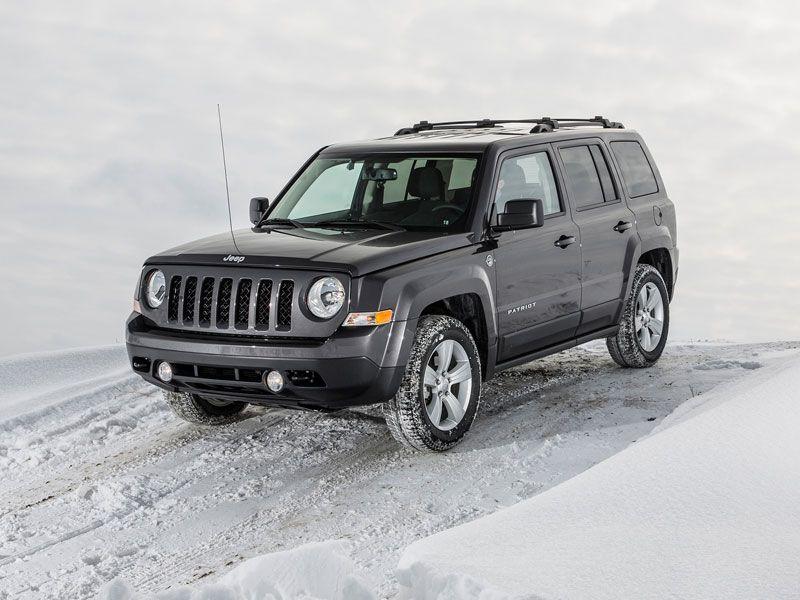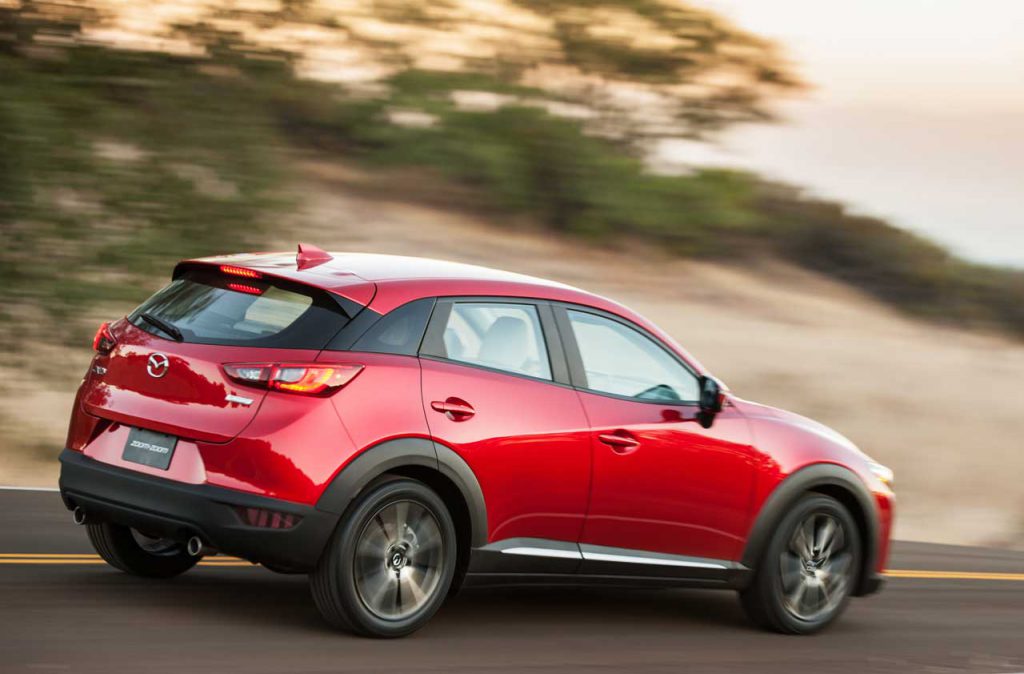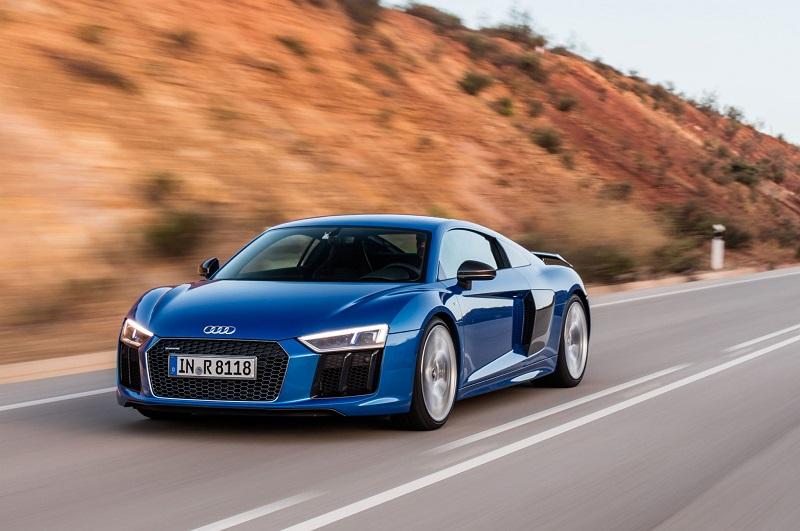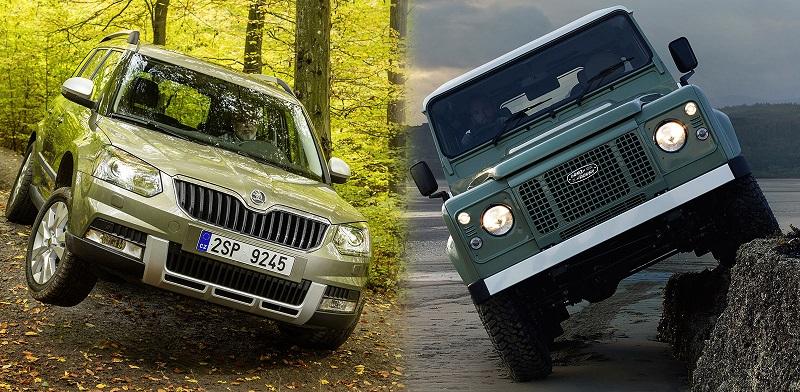The four-wheel-drive and all-wheel came to the frontline in the last decades. People’s obsession with these drivetrains encouraged many automakers to release many crossover vehicles with either 4WD or AWD. Despite the soaring popularity, the concept of all-wheel drive vs four-wheel drive still confuses many people. Aren’t the drivetrains the same thing? Or, do they have some ingrained differences? Let’s find out.
Contents
What Is a Four-Wheel Drive?
Also known as 4×4 or Four by Four, the drivetrain is the automatic choice for off-road vehicles. You can split the 4WD category into two groups – part-time 4WD and full-time 4WD.
Part-Time 4WD
It’s the most basic and the original 4WD system. It allows the car to drive in two-wheel drive (supplying power to only the rear wheels) in normal conditions. There will be an option to switch to the full 4WD mode and the torque will be equally divided among all the four wheels.
There are no differentials between the front and rear axles. For this reason, driving a part-time 4WD in normal conditions such as on bitumen roads can damage the drivetrain by causing the components to take excessive stress. Cars with such a drivetrain normally have a ‘low range’ option for operating in extreme off-road situations. It refers to the changing of gears in the drivetrain that boosts the torque in the result.

Full-Time 4WD
The vehicles running with this drivetrain have torque transmitted to all four wheels at any given time. You can drive them on all types of surfaces including bitumen and off-road conditions. You can split the front and rear axles by a differential to operate such a car on normal surfaces. This option allows the driver to run the car at various speeds, which comes in handy at different driving conditions including taking a turn or cornering.
Cars with such a drivetrain come with a ‘diff lock’ feature that locks the differential to a specific point, stopping the rotational difference between the axles. This feature helps a vehicle to achieve optimal traction in off-road conditions.
Some models may have the ‘low range’ option too for extra help in driving on steep inclines and extreme off-road situations.
See more:
What Is an All-Wheel Drive?
If you compare the all-wheel drive vs. the wheel drive, you will find the former one almost similar to the full-time 4WD structure in terms of sending torque to all the four wheels at any given time. However, you cannot drive such cars in two-wheel drive nor you can lock the differential between the axles.
How do the vehicles operate then? Well, in normal driving conditions where the car needs to operate in low traction, the differentials can restrict the rotational difference between the front and rear axles. Depending on the road conditions, some advanced models such as Porsche 911 Turbo featuring this drivetrain can supply the full torque to either the front or rear axle.

The AWD systems do not have the ‘low range’ option that is normally found in 4WDs. However, just like the part-time 4WD drivetrains, some AWDs send the torque to the front wheels only. The torque transfer automatically changes toward the rear wheels when the ECU (engine control unit) detects the loss of traction.
All-Wheel Drive vs 4-Wheel Drive – Why Do They Exist?
The automakers have been producing more and more models with these drivetrains. You will find them everywhere – from luxury SUVs to high-performance sports models and family-friendly cars.
Why? Simply because of traction. You will need this type of drivetrain to enhance traction during acceleration.
If you want to have more explanation about the traction in 4WD vs AWD, let’s look at the examples of two models that use them. The AWD system in a high-performance car like the Audi R8, helps it to have a faster kickoff by transmitting power to all the wheels at the same time. It reduces stress on a single wheel, so there is much less wheel spin, and the wheel components last longer.

On the other hand, the 4WD in an off-road vehicle like the Jeep Wrangler ensures the contribution of all the wheels in hostile conditions. If it’s a slippery road and one or two tires lose traction, the others will do their job and get the car out of trouble.
People think that these drivetrains are the safer option in severe weather such as in a stormy environment or on a snowy road. It’s just a myth. They can do little on roads slippery because of ice. The things that you will need in those situations are good tires and your driving skill.
Difference between AWD and 4WD
So, while reading this discussion about all-wheel drive vs. four-wheel drive, you might still have been thinking what the real differences are between them. How does a Porsche 911 4S and a Range Rover differ from each other? They have almost similar drivetrains, right? Well, there are subtle variances.
|
All Wheel Drive |
4 Wheel Drive |
|
| Power Reception | All the four wheels receive power constantly, though not an equal amount. | Part-time models operate in two-wheel drive and the full-time 4WDs receive a share of the engine power all the time. A part-time unit can switch into a full-time drivetrain. |
| Applications | Suitable for high-performance vehicles that need faster acceleration and better handling capability. | Perform better in off-road conditions like mountainous areas and muddy roads. |
| Feature | Don’t have the locking differential option to restrict the difference of rotation between the axles. | Have either or both ‘diff lock’ and ‘low range’ options for applying better traction on slippery surfaces. |
| Fuel Economy | They are less fuel-efficient than their two-wheel drive counterparts. | The part-time units save more fuel than AWDs and full-time 4WDs. |
| Examples | Ford Fusion, Lexus IS, BMW 5 Series, and more. | Suzuki SUVs (part-time 4WD), and full-time models are Mitsubishi Montero, Toyota Sequoia, and more. |
Watch more:
All Wheel Drive vs 4 Wheel Drive – Which One Is Better?
Actually, you don’t need any of them unless you are a frequent off-road traveler or live in an area where winter does not practically end. These cars cost more than the models with regular drivetrains and they are not the best options for bitumen roads. However, if you still want to buy one, the AWD is better because a 4WD will be worthless unless you need a great amount of power for cruising off-road.



